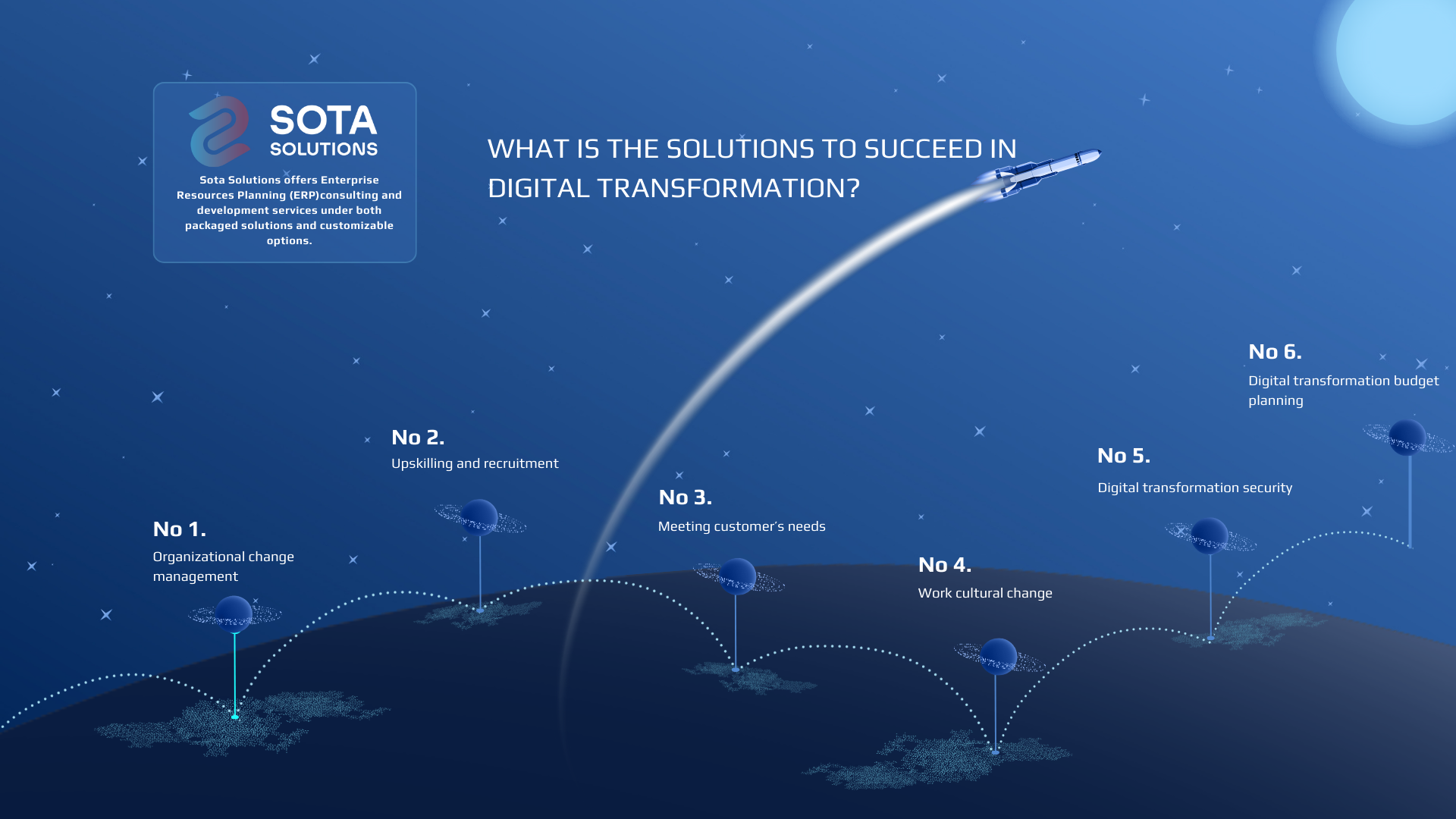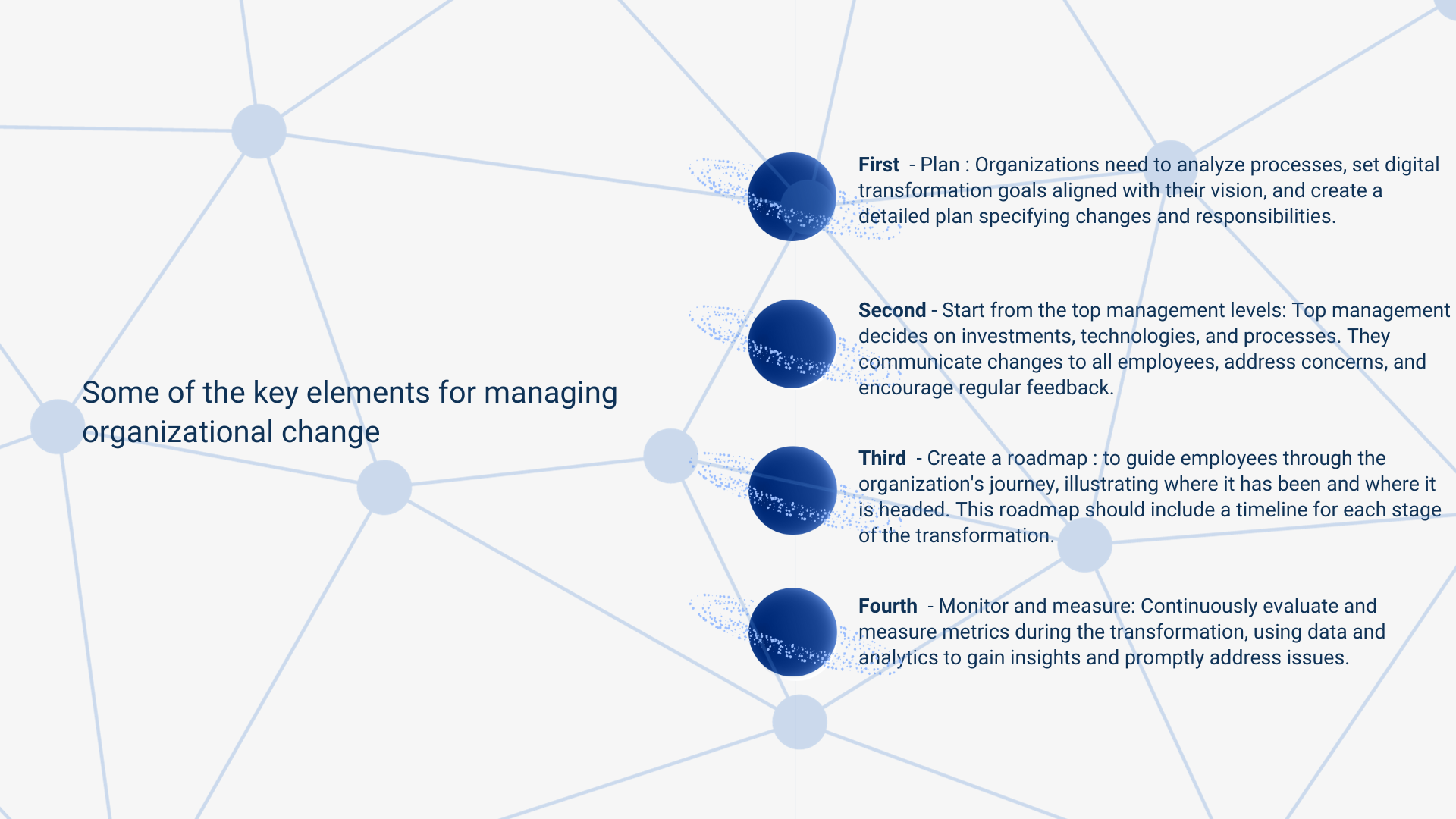Digital transformation is no longer an option for businesses but a necessity.
I. What is digital transformation?
Digital transformation is the process of applying digital technologies to improve the overall processes, culture, services, and customer experiences. As new technologies are being developed and improving rapidly, organizations are focused to stay updated with the newest trends and integrate these innovations.
Many organizations are incorporating technology into almost all aspects of their internal and external operations. This incorporation of technology is impacting their processes and operations significantly, leading to organizational and structural changes.
The main benefits of digital transformation in organizations are:
- Modernizing processes
- Optimizing workflow
- Strengthening security
- Increasing profitability
Digital transformation does not only mean adopting new technologies but also adopting new business models. Organizations need a comprehensive understanding of digital transformation, taking into account factors from employee reactions to its impact on customer experiences.
However, many organizations start on this journey easily, some of them find it difficult to complete and even fail to reach their goals in terms of money, organizational effort, and time lost, such results are massively costly.
Hence, considering these challenges, it becomes evident that while achieving digital transformation can be demanding, the associated benefits and advantages make it virtually indispensable in today's industries
II. Digital Transformation Challenges
Whenever an organization goes through fundamental changes, it is expected to also experience various challenges and difficulties. This also applies to digital transformation, and if the transition does not happen smoothly organizations can face some challenges.

1. Lack of organizational change management strategy
Organizational change management, crucial for successful digital transformation, involves a systematic approach to handling organizational changes. The lack of proper organizational change management can negatively impact transformation success, a primary cause of high failure rates. This comprehensive strategy focuses on various components of an organization rather than only one, particularly, changes in culture, mindset, processes, structures, and the entire business model. A robust change management strategy significantly enhances the likelihood of achieving transformation objectives.
2. Lack of expertise
In the pursuit of digital transformation, organizations face a critical challenge— a shortage of expertise. KPMG highlights this talent gap, with 44% citing a lack of experts, 32% noting the high cost of adding talent and systems, and 29% identifying skill shortages causing delays.
Some of the most valuable and in-most-demand skills are in these areas: "Cloud Computing, AI, Mobile App Development, UX Design, Blockchain, Cybersecurity, and DevOps". Closing this gap involves educating and training employees for successful adaptation to digital transitions.
3. Continuous evolution of customer needs
Customers' expectations and demands have advanced as a result of evolving developments and improvements in customer service, and this poses a challenge for many organizations. As customer service evolves, the demand for more intuitive and enhanced services grows. Organizations investing in digital transformation must continually adapt to meet evolving customer needs with new technologies.
4. Internal resistance to change
Despite their incredible ability to adapt to change, humans by nature tend to prefer comfort and routine because it gives them a sense of security. That's why when organizations are undergoing digital transformation, they may encounter resistance from employees.
>>>The best way to solve this problem is to encourage employees and guide them through these first steps of the digital transformation process. Because, it's notable if the transition period is short then all the rapid changes and all the new tools, processes and technologies can impact their performance and efficiency, that making them unable to keep up with that change, leading to unexpected results. Hence, we encourage businesses to start with the transition process slowly as it helps people change their thinking and prepare for the next new changes.
5. Security concerns
As businesses embrace remote work, digital workflows, and cloud-based technologies, they face increased vulnerability to potential risks. As a result, it becomes imperative for them to enforce enhanced security measures and elevate their cybersecurity protocols to safeguard against potential threats. Failing to safeguard an organization's data and other valuable assets can expose them to significant risks and adverse consequences.
6. Budget constraints
Digital transformation poses a further obstacle which is the high costs that come with it. Given the magnitude of this investment, organizations must meticulously strategize their budgeting to formulate a plan that effectively meets the requirements of both customers and the organization itself.
III. How to Overcome Challenges and Succeed with Digital Transformation?
According to a digital transformation report,there are three critical factors for every successful digital transformation: " Strategy, Mindset, Skill & Tech"
Achieving a successful digital transformation journey necessitates finding the ideal equilibrium within the Golden Triangle of Digital Transformation and making adjustments to each element. It is crucial for organizations to develop a well-defined strategy and seamlessly incorporate it into all their operational processes.

1. Organizational change management
To implement a successful organizational change management, organizations should apply many strategies and actions. Let's us walk you through these
key elements for managing organizational change:

2. Upskilling and recruitment
A common challenge in digital transformation is lack of expertise. Organizations should invest in highly skilled employees, consider hiring new talent, and appoint leaders familiar with digital processes. In addition, companies should also consider having free online courses or training hours to help employees have the opportunity to come into contact with new technologies and new knowledge so that they can apply them to their work effectively. mature.
3. Meeting customer’s needs
Digital transformation is fundamentally influencing customer experiences. To meet evolving expectations and needs, organizations must keep abreast of the latest trends and continuously explore new ways, methods, and technologies designed to enhance customer experience.
4. Work cultural change
Human involvement is key to digital success. Surveys have shown that businesses should emphasize the need to start the change process with people, not just technology. Organizations must cultivate a cultural mindset shift and raise awareness about digital transformation. To mitigate employee resistance, involve the entire team from the start and maintain transparent communication.
5. Digital transformation security
Managing risks is crucial for a secure and successful digital transformation. Organizations must identify and address risks by implementing security controls and policies, investing in new tools and technologies, and providing employee training in risk management.
6. Digital transformation budget planning
In addition to the time commitment, successful digital transformation also requires meticulous financial planning. Hence, organizations should develop a financial roadmap that considers overall goals, strategies, priorities, timelines, expected outcomes, and return on investments. The budget should be flexible to address any challenges or issues that may arise. While the challenges of digital transformation may appear daunting, a positive mindset, appropriate resources, and concerted effort can lead to successful transformation, with the ensuing benefits justifying the endeavor.
IV. Conclusion
From the above analysis of the difficulties in digital transformation that most businesses encounter, there are solutions to overcome them. SotaERP hopes that businesses can find the right directions as well as the most effective way to operate the digital transformation process in their organizations. If you still have any questions or concerns, feel free to contact us immediately, we are ready to advise you right now.